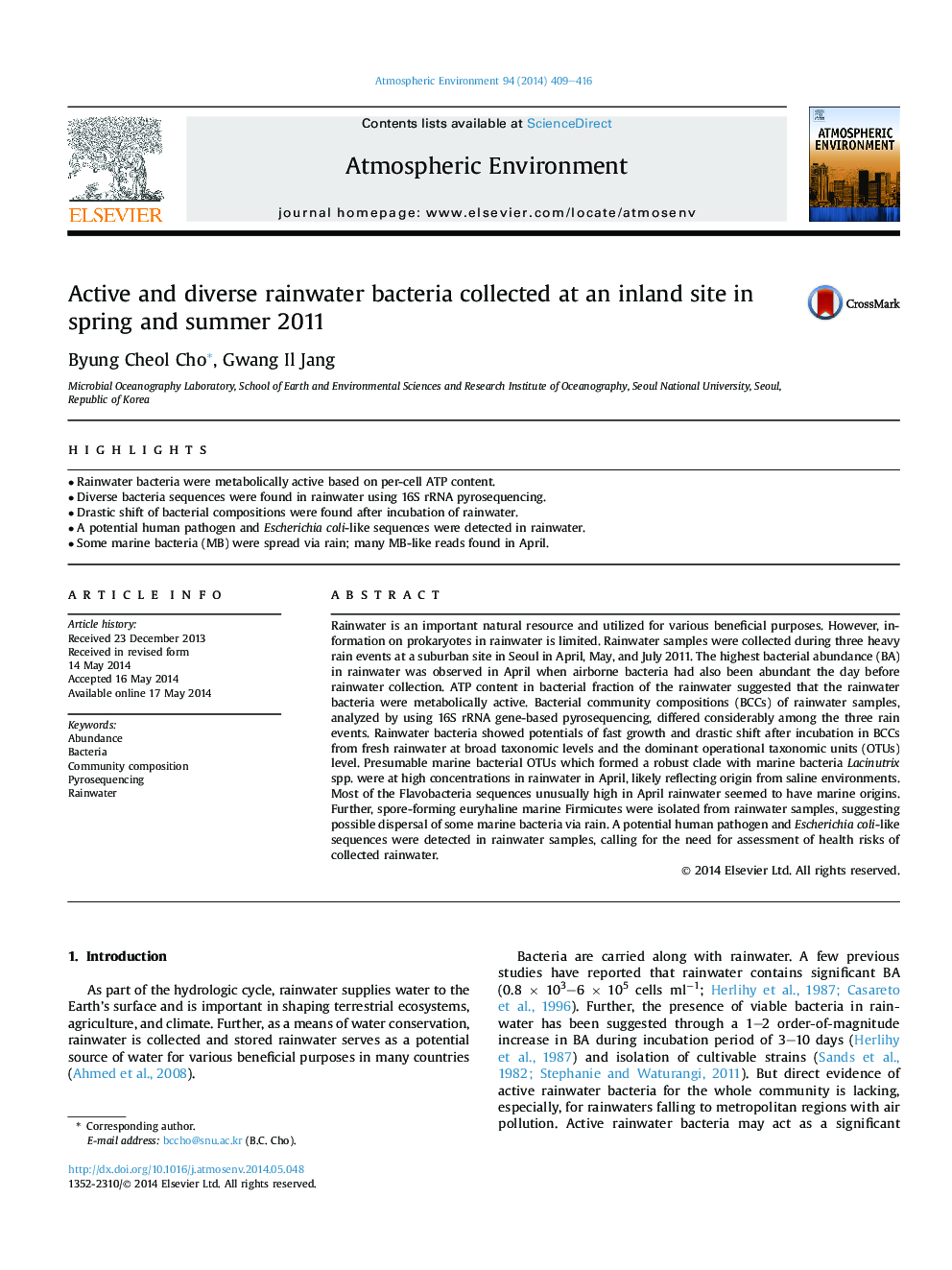| Article ID | Journal | Published Year | Pages | File Type |
|---|---|---|---|---|
| 6339614 | Atmospheric Environment | 2014 | 8 Pages |
Abstract
Rainwater is an important natural resource and utilized for various beneficial purposes. However, information on prokaryotes in rainwater is limited. Rainwater samples were collected during three heavy rain events at a suburban site in Seoul in April, May, and July 2011. The highest bacterial abundance (BA) in rainwater was observed in April when airborne bacteria had also been abundant the day before rainwater collection. ATP content in bacterial fraction of the rainwater suggested that the rainwater bacteria were metabolically active. Bacterial community compositions (BCCs) of rainwater samples, analyzed by using 16S rRNA gene-based pyrosequencing, differed considerably among the three rain events. Rainwater bacteria showed potentials of fast growth and drastic shift after incubation in BCCs from fresh rainwater at broad taxonomic levels and the dominant operational taxonomic units (OTUs) level. Presumable marine bacterial OTUs which formed a robust clade with marine bacteria Lacinutrix spp. were at high concentrations in rainwater in April, likely reflecting origin from saline environments. Most of the Flavobacteria sequences unusually high in April rainwater seemed to have marine origins. Further, spore-forming euryhaline marine Firmicutes were isolated from rainwater samples, suggesting possible dispersal of some marine bacteria via rain. A potential human pathogen and Escherichia coli-like sequences were detected in rainwater samples, calling for the need for assessment of health risks of collected rainwater.
Related Topics
Physical Sciences and Engineering
Earth and Planetary Sciences
Atmospheric Science
Authors
Byung Cheol Cho, Gwang Il Jang,
